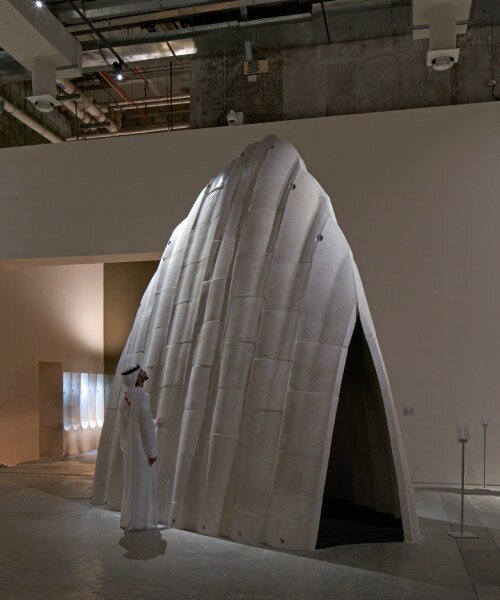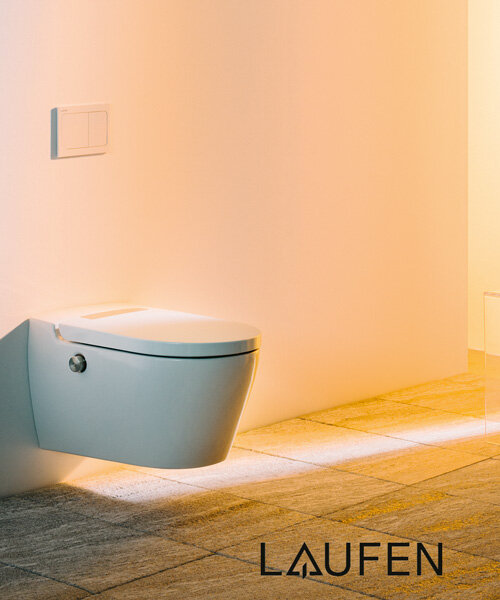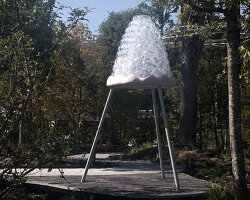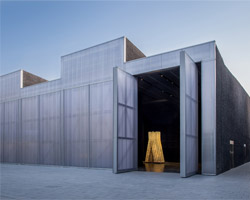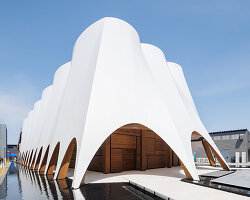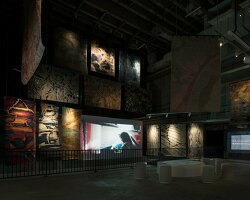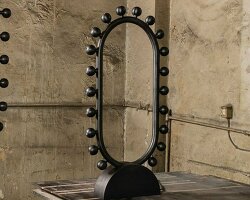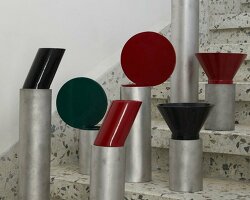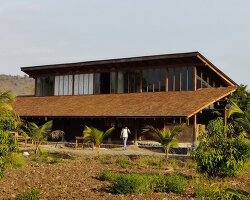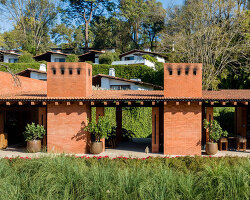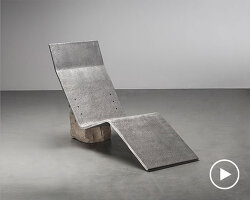tiamat morphs gothic arab forms and sand formations
For almost a decade, AAU ANASTAS has been researching the history of stone architecture to revive its implementation in contemporary structures. With its Stone Matters study, the Palestinian practice has been particularly interested in the politics of the material’s potential for crafting low carbon footprint structures and more resilient cities. Within that context, Stone Matters’ latest iteration, Tiamat, was recently unveiled at Design Doha Biennial’s Arab Design Now exhibition as a partially enclosed micro-architecture made of limestone sourced from Bethlehem.
On view in Qatar, Tiamat invites spectators to walk through the shaded enclosure that morphs elements of Gothic architecture, desert sand formations, and stereotomy techniques. Setting new standards for contemporary stone architecture rooted in Arab history and identity, it bridges intrinsic geometrical properties of surfaces inspired by ridges of sand dunes, ribbed structures, and vaulted systems.
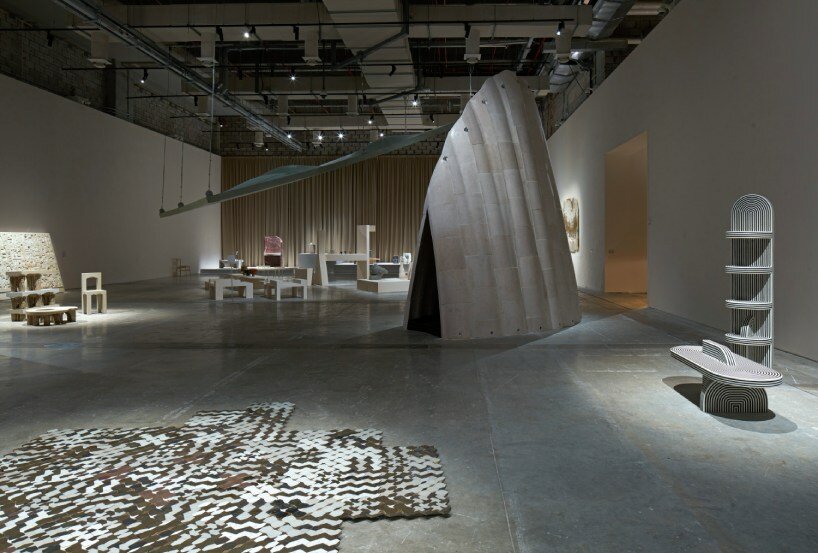
installation view | all images by Edward Sumner unless stated otherwise
aau anastas propose contemporary stone structures
Stone Matters’ research, led by Elias and Yousef Anastas, looks with hindsight at applications and paradigmatic theories set in the 1960s, in the 17th century, and in prehistory. At each moment in time, stone has called for an intuitive architecture; ‘Its history is not linear, and, in some cases, theories may have followed and/or contradicted already grounded and established practices of architecture,’ write the architects.
With Tiamat, AAU ANASTAS studio links techniques, history, and know-hows to present an enclosure that combines historical stone working techniques with modern technologies. Its proportions relate to a cavity where architectural atmospheres are unique to stone construction in terms of light, sound reverberations, climate control, and textures. Beyond this, the system casts a wider lens at combining techniques, forms, and theoretical and natural principles to suggest new ways of using the natural material today.
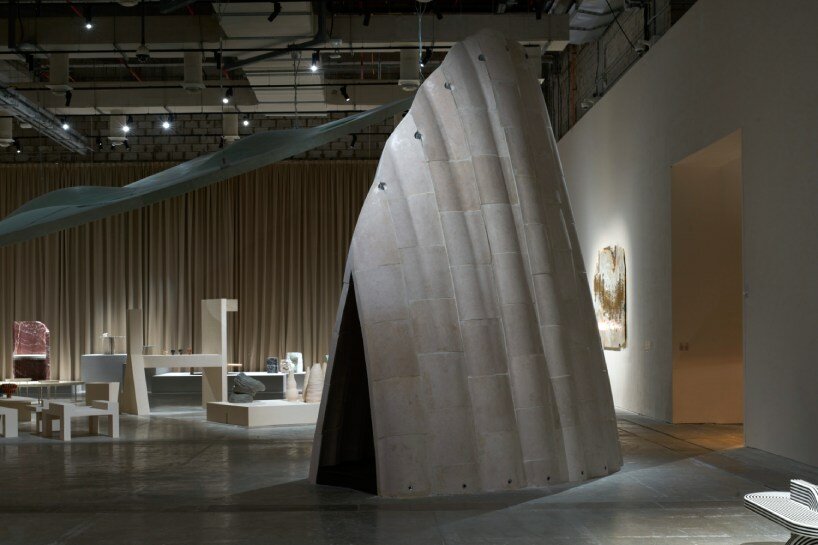
unveiled at Design Doha Biennial’s Arab Design Now exhibition
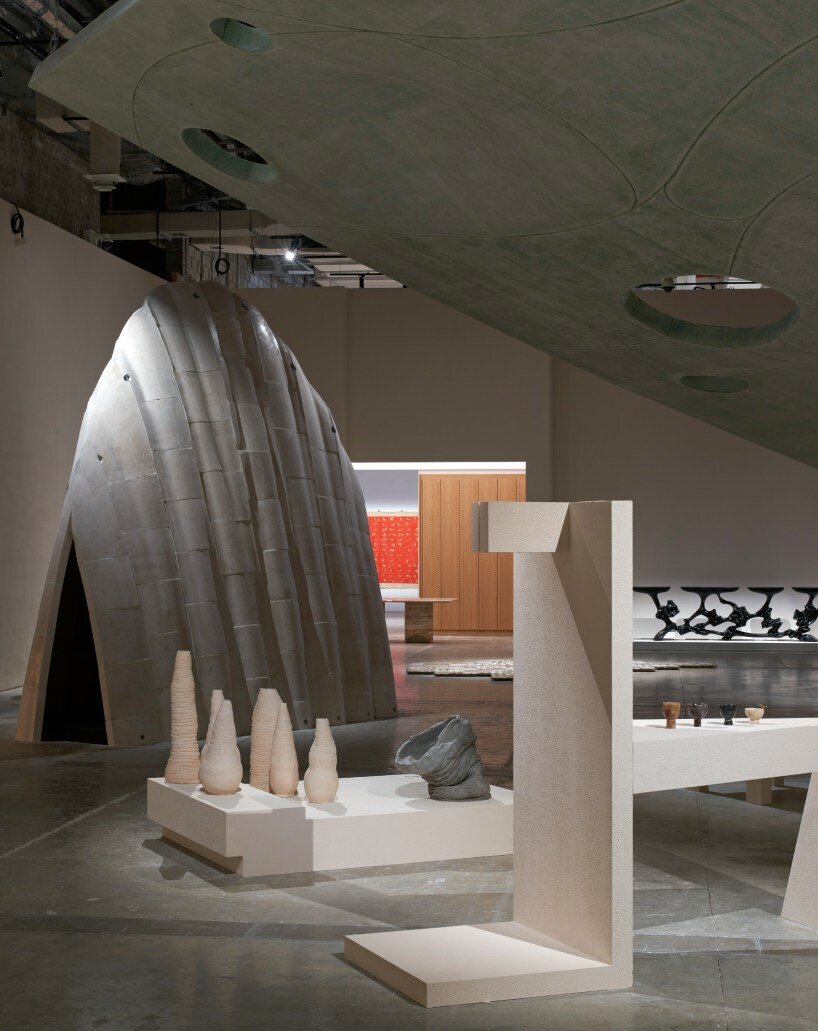
AAU ANASTAS’ Tiamat extends from the studio’s ongoing Stone Matters study
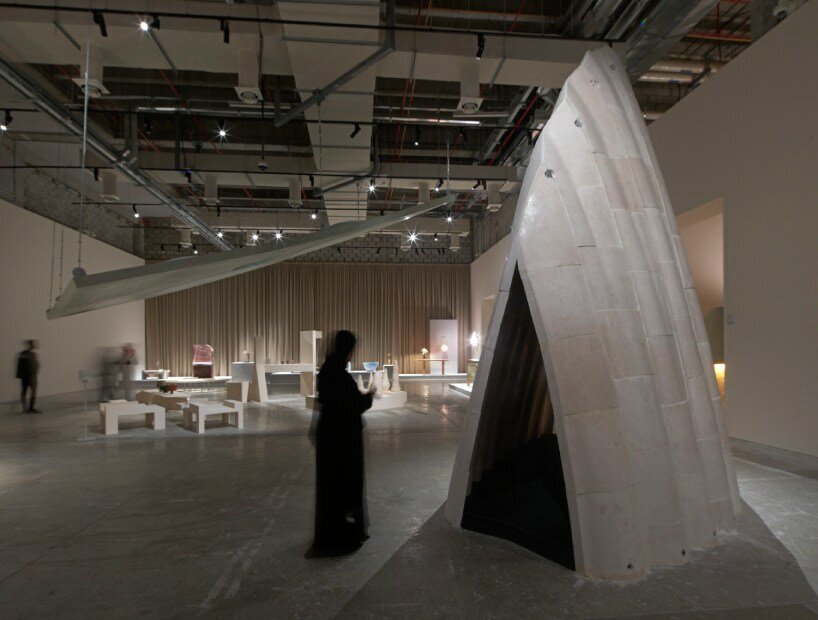
a partially enclosed micro-architecture made of limestone locally sourced from Bethlehem
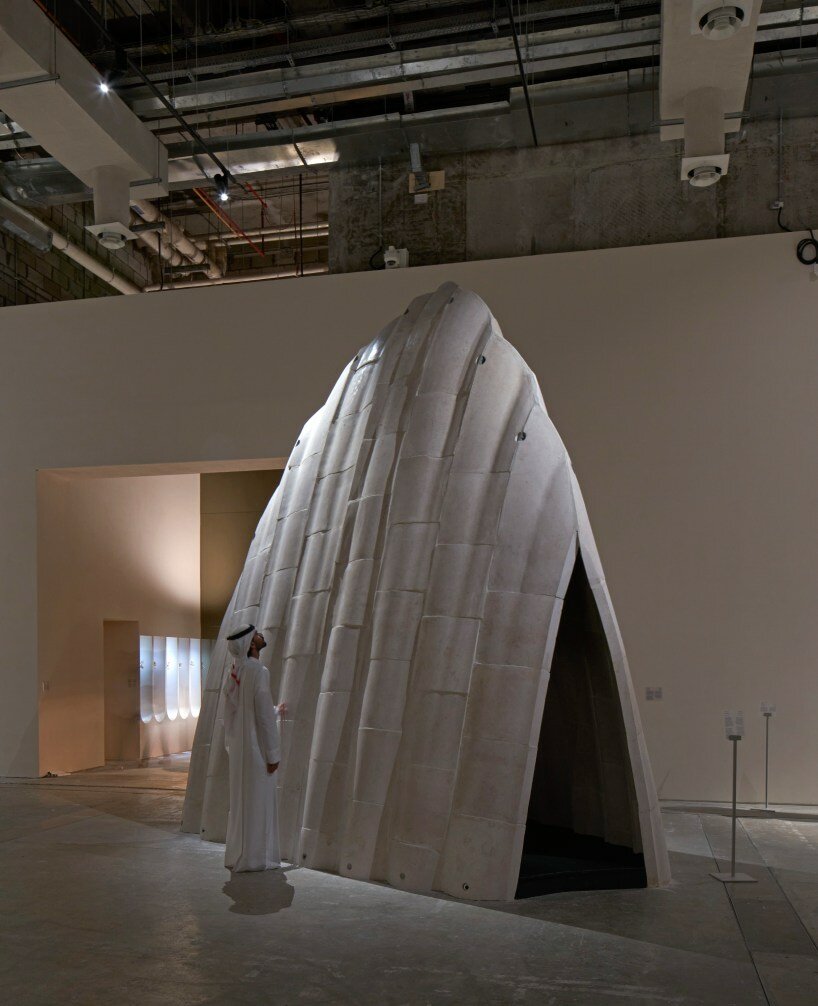
morphing elements of Gothic architecture, desert sand formations, and stereotomy techniques
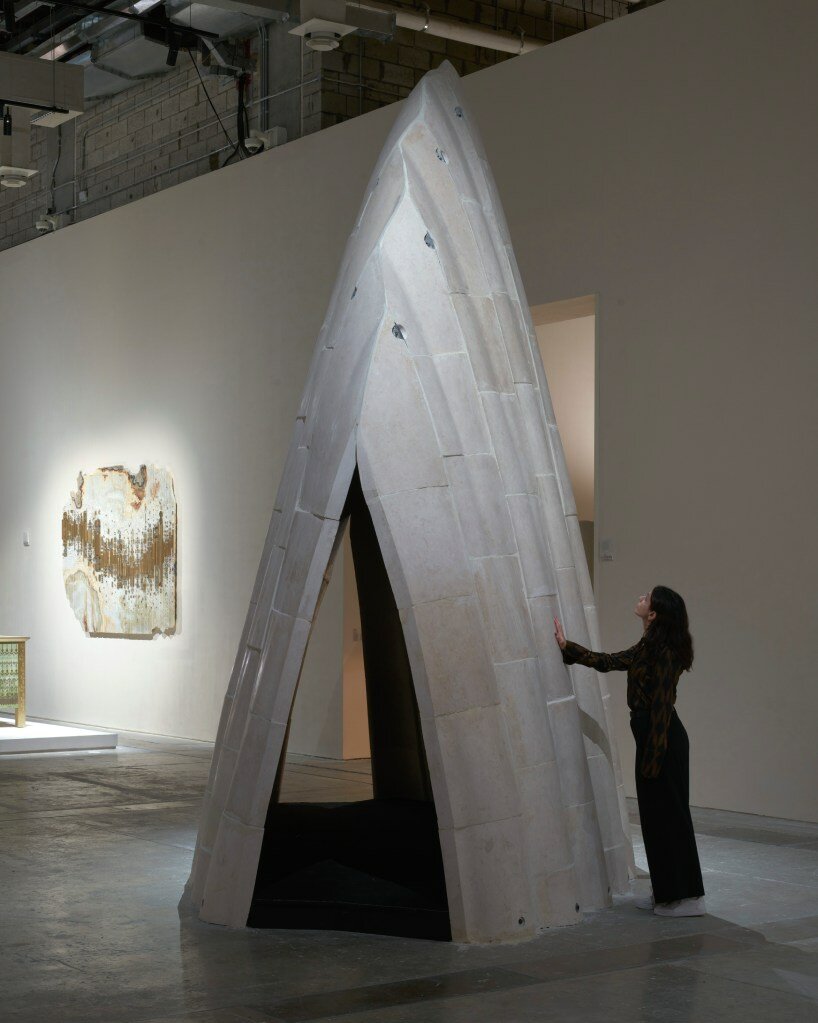
Tiamat’s surfaces recall ridges of sand dunes, ribbed structures, and vaulted systems
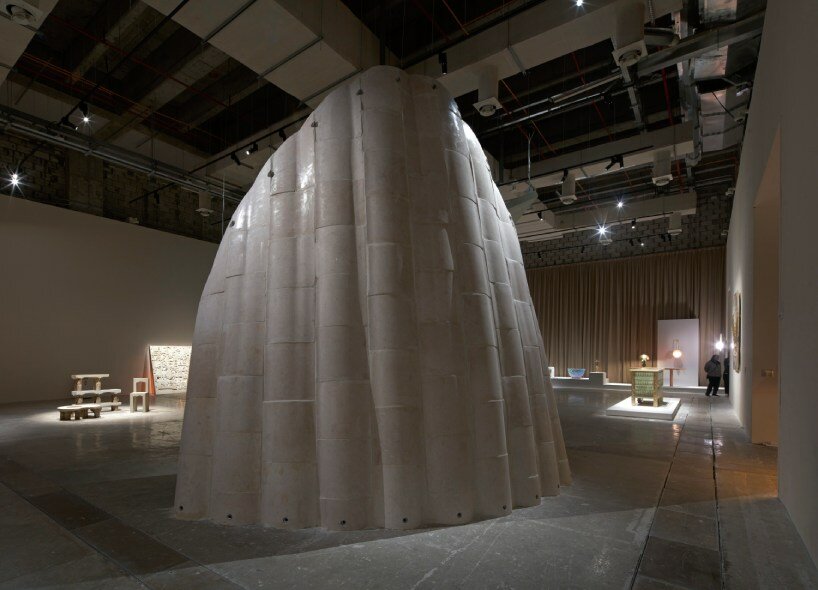
the project’s atmospheres are unique to stone construction regarding light, sound, climate control, and texture
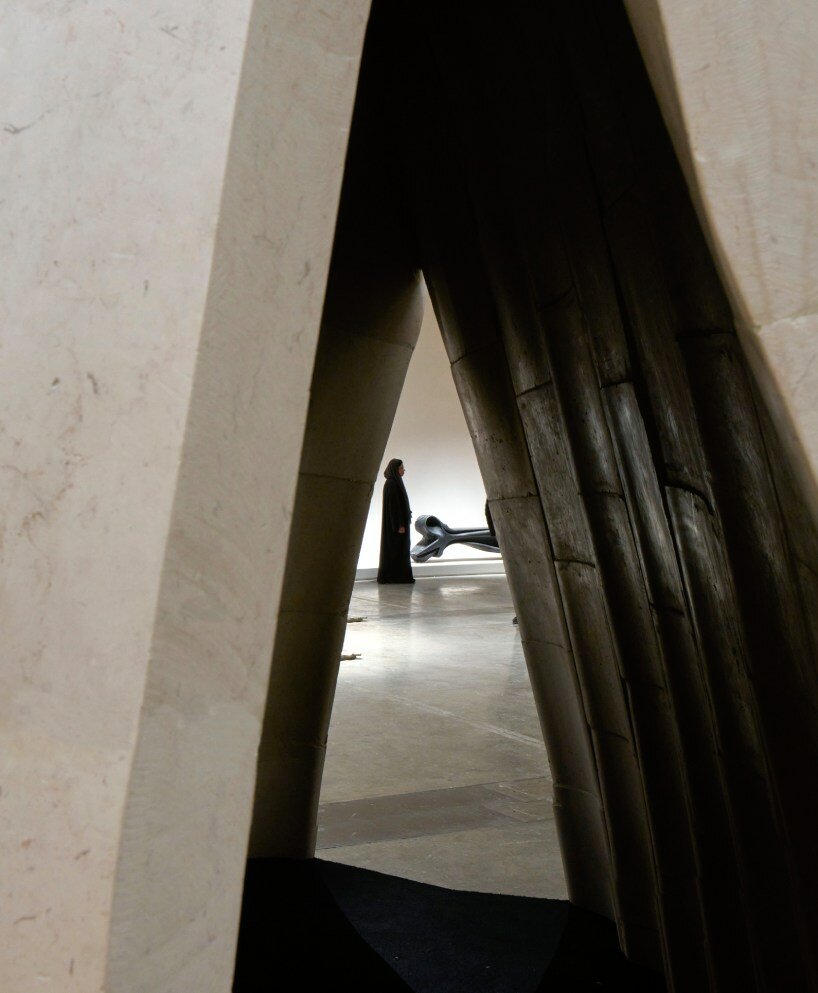
AAU ANASTAS looks to history to revive stone’s implementation in contemporary structures
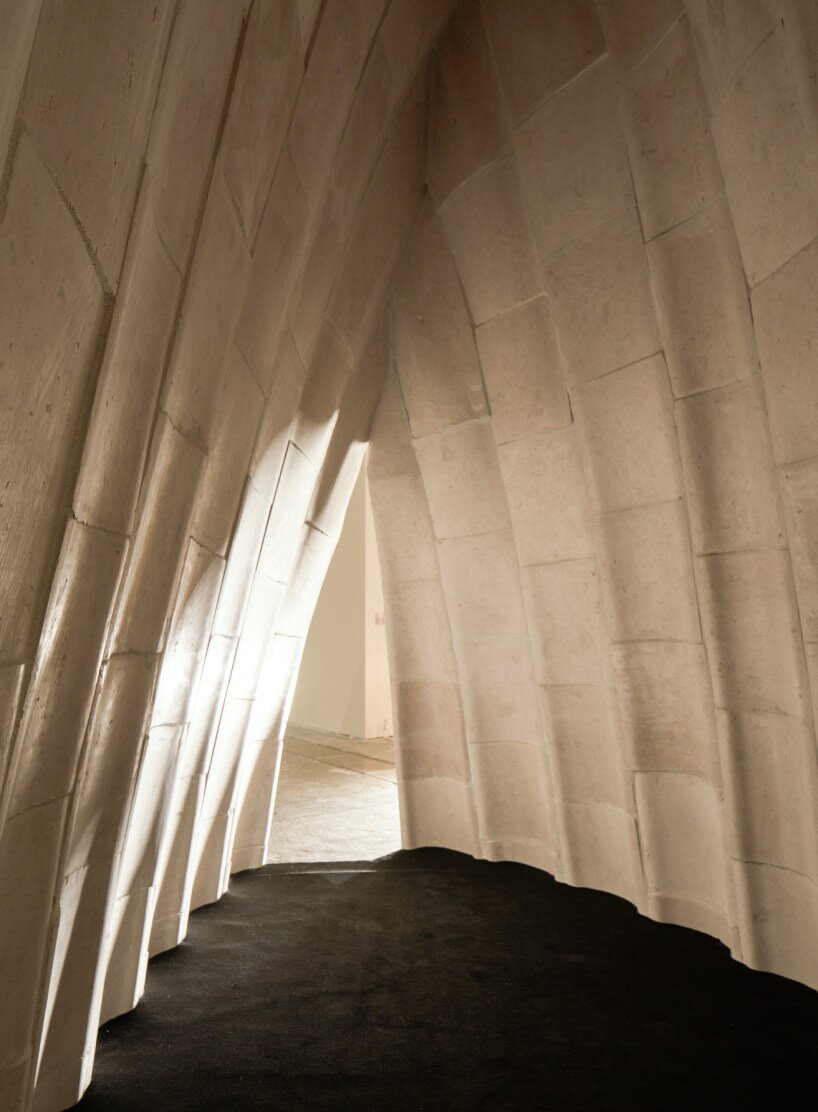
combining historical stone working techniques with modern technologies | image courtesy of AAU ANASTAS
project info:
name: Tiamat
architect: AAU ANASTAS
exhibition: Arab Design Now at Design Doha Biennial
